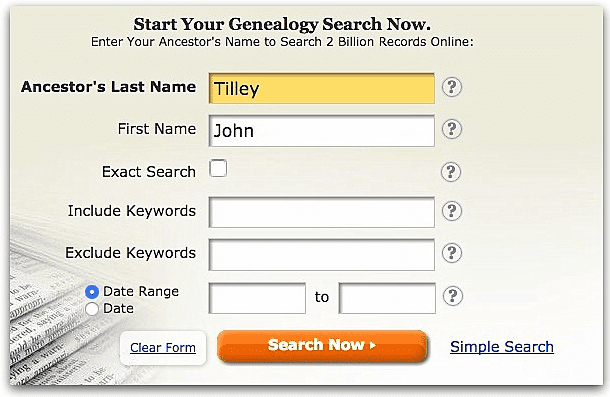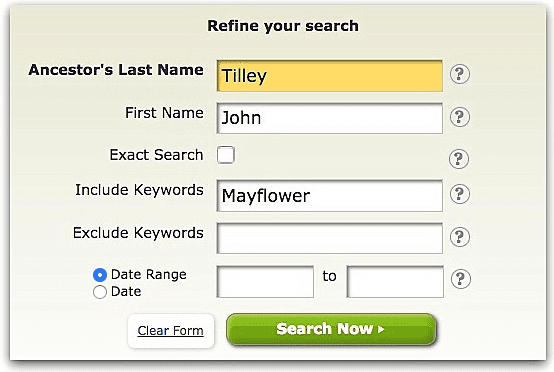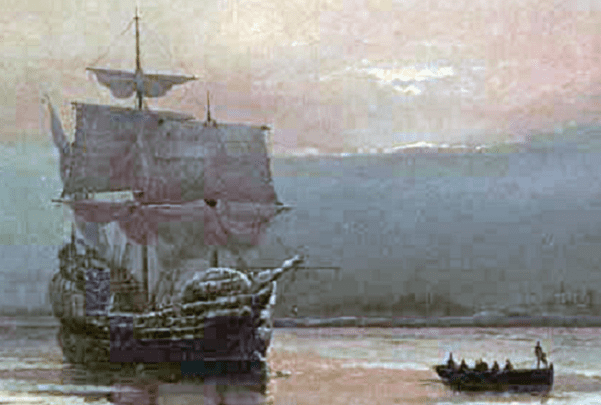Mayflower Pilgrim John Tilley (1571-1621) is one of my ancestors.
I have spent some time digging into my Mayflower ancestors’ lives to see what new information I could find about them. In my research on John Tilley this month, a newspaper notation about his profession took me by surprise. He was a “silk worker.” I don’t know as I’ve had any other ancestor that worked as a silk worker.
John was born in December 1571 in Henlow, Bedfordshire, England, and married Joan Hurst (1568-1621) on 20 September 1596. John and Joan had five known children, according to MayflowerHistory.com: Rose (who died as a young child), John, Rose, Robert, and Elizabeth. Of their children, Elizabeth Tilley (1607-1687) was the only one who accompanied them on the Mayflower voyage. She was about 13 years old at that time.
Sadly, John died the first winter in Plymouth. So, I decided to search for John in GenealogyBank’s Historical Newspaper Archives to see if additional information about him had ever been published.
I started by searching for John’s first and last names.

This search was far too broad: over 3,000 results. To narrow it down, I included the keyword “Mayflower.”

This more refined search led me to an article about the Arkansas Society of Mayflower Descendants, which listed John Tilley’s family as Mayflower passengers, and also gave another interesting detail: his profession.
Wait – William Bradford was also listed as a silk weaver, Francis Cooke a wool comber, John Goodman a linen weaver, Degory Priest a hatter, Edward Tilley a cloth maker, James Chilton a tailor? I was pretty surprised that so many of them worked in the weaving, cloth and apparel trades: solid, practical skills that everyone in the colony would need.
At the time the Pilgrims came to the colonies in the 17th century, silk was a luxury commodity and the British were hoping to use the colonies as a production site. It would be another 150 years later before the silk industry would begin and take hold here.
Had John and Joan Tilley survived that first tough year, it might be that his skill in the silk industry and the active support of his wife and daughter would have developed the industry a century earlier.
Genealogy Tip: Newspapers can tell you the details of your ancestors’ lives – like the professions of even your earliest American ancestors. It’s interesting to know the skills that they had and how they provided for their families. Use GenealogyBank’s Historical Newspaper Archives to discover your own relatives’ stories.
Related Articles:
